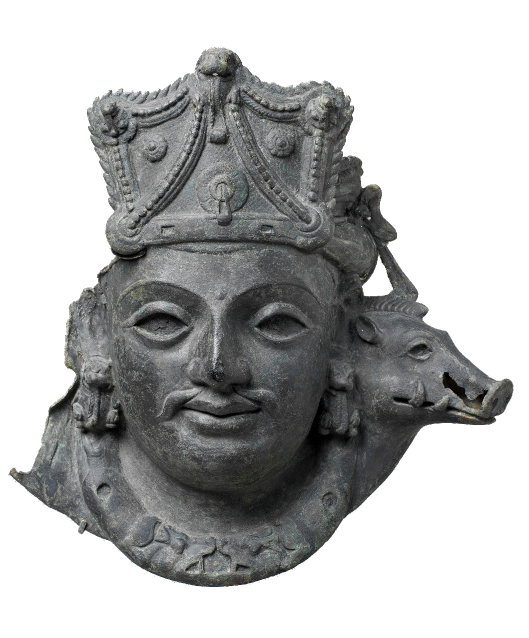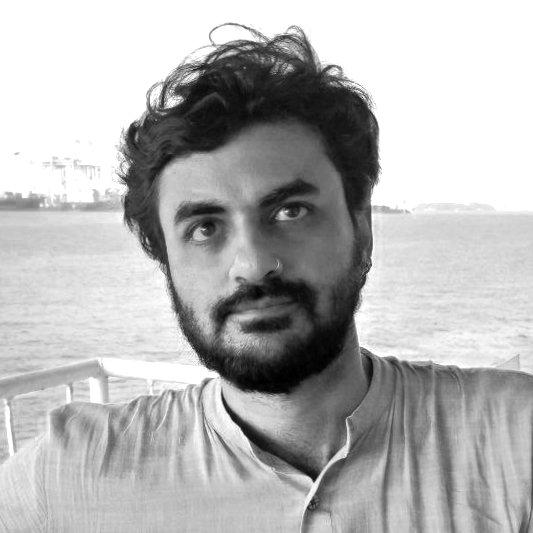PERSPECTIVES
After Words: Ram Kumar’s Landscapes of Silence
What are a writer’s colours? What are a painter’s words? What do they say to us, who love stories?
In an untitled oil-on-board from 1970, what might be a river appears to writhe in tension with its banks, stabbed by a dark spit in the centre — the water is choppy, the rocks sharp, but there is not a splash. A canvas from twenty years later grants us a thin, placid blue, but at its centre too a pair of shapes, bent and splintered by an unknown force, throw shadows over its title Flower. Bookending the middle decades of a sixty-year career — and his most abstract phase — these paintings represent some of Ram Kumar’s most elusive work. They also evoke the beguiling silence at the heart of his oeuvre.
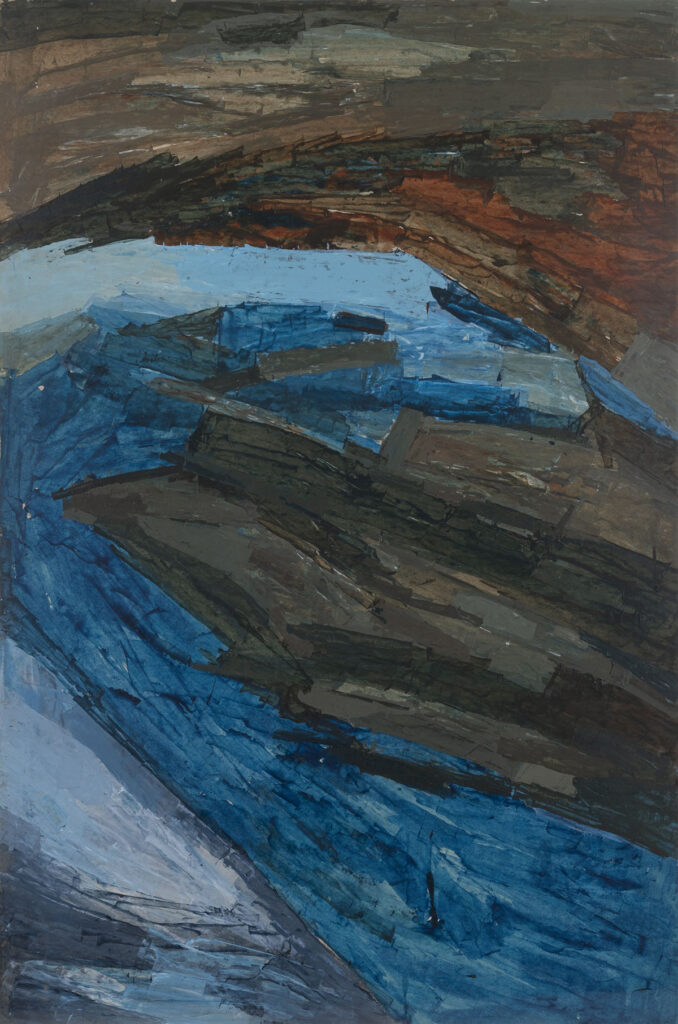
Once drawn in by the palpitating colours and sharp forms of these works, we find ourselves in a no man’s land — these are not landscapes whose distances we can wander through, nor stories we can read. While full of gesture, they offer little provocation, nor a resolved meditative experience; we are suspended, as if between inhale and exhale. They sometimes evoke photographs taken accidentally, mid-motion. Yet his gallerist and friend Arun Vadehra recalls: “Ram Kumar has very often told me that there is nothing accidental in his work, every area of the canvas is deliberate and well thought about.” What, then, is being offered; and what is being kept from us?
Ram Kumar was a writer before he was a painter, raised with a love of literature that he held close all his life — closer even than painting, he said in one interview late in life. He published acclaimed Hindi stories and novels in the fifties and sixties — works of social realism that build, through an impasto of everyday words, an air of dusks in which his protagonists unwillingly revisit pasts through the cobwebs of their single-room habitations; where the drudgery of ticking clocks and repeating days becomes a fragile security beyond which little can be imagined. The same figures appear in Ram Kumar’s paintings of the fifties, conveying this paralysis and despair in an embodied silence — heads cocked, arms crooked, and blank eyes gazing out from between the girders of a violently urbanising world. The critic Richard Bartholomew, with whom Ram Kumar shared a long friendship, found in these “an unmistakable element of mime.”
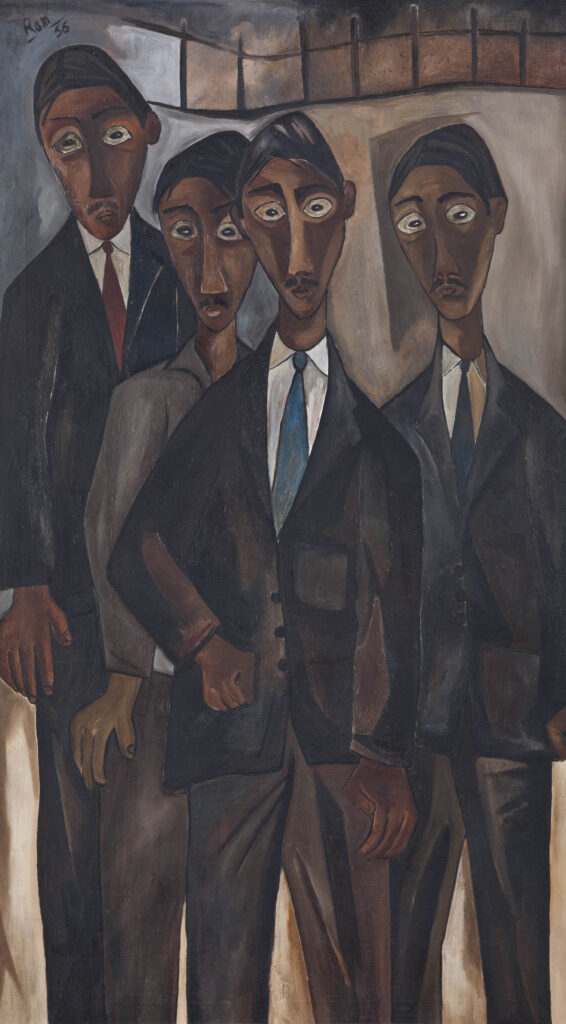
We see even these narratives of silence hushed in the sixties, with Ram Kumar’s foray into cityscapes — perhaps a more natural domicile for the individual’s anonymity and wordlessness. What captured him was Varanasi, the site of long human activity, intense imagination, and death — a city he first discovered as a guest in the family home of Premchand, the giant of Hindi literature. The city is rendered crowded yet vacant, only the occasional home or temple looking out at us in a stupefied gaze. The brooding existentialism of individuals is now taken on by the geometry of civilisation itself — sometimes revealed as beautiful by surprise, but nevertheless grave.
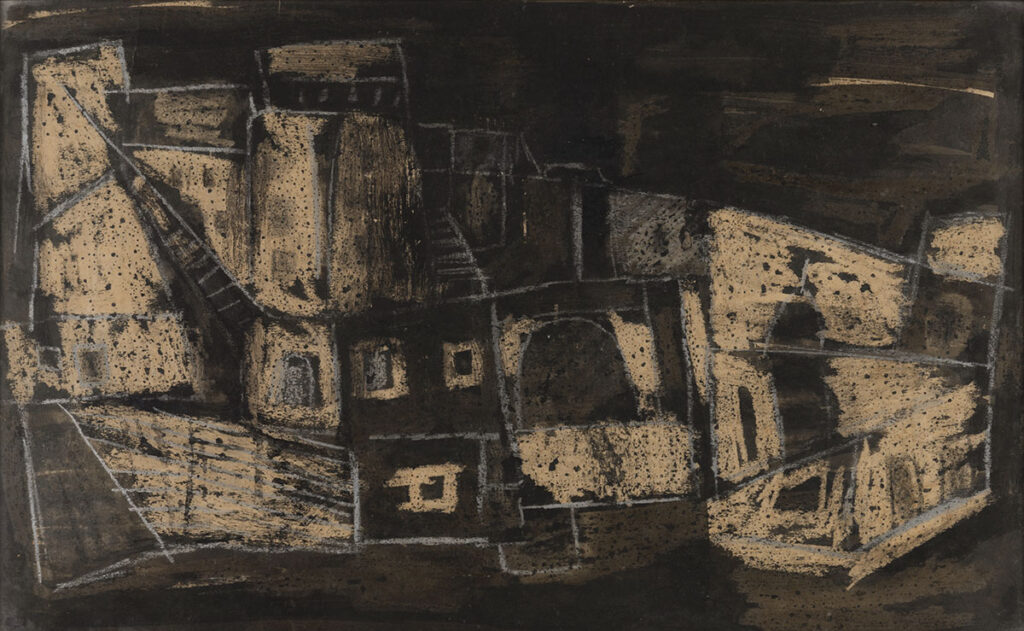
By the seventies, we see the geometry of forms shattered, the anchors of iconography lifted. Records of the artist’s journey come to us now only as quasi-recognisable, map-like dispatches that show great tectonic masses come alive, rivers frozen, a hint of sky or sea perhaps. He had stopped writing, and at this moment, in the words of Nirmal Verma — pioneer of the Nai Kahani (New Story) movement in modern Hindi literature, and one of Ram Kumar’s brothers — “Without negating the writer in him, he begins to travel light as a painter.”
In these decades, Ram Kumar was bestowed with literary awards like the Premchand Puraskar (1972) and the Kalidas Samman (1986). Meanwhile, his search was culminating in abstract paintings that seemed to have no beginning or end, that neither the language of words nor of forms could reach. They are intensely achieved expressions, eventually, of the inexpressibility of things. Vadehra observes, “You could take them forward or backward. You could extend them by any number of lengths, but there was always an abrupt ending to his canvases.” He recalls Ram Kumar bringing in canvases to the gallery, unable to identify which way was up “after a day or two of making the piece.”
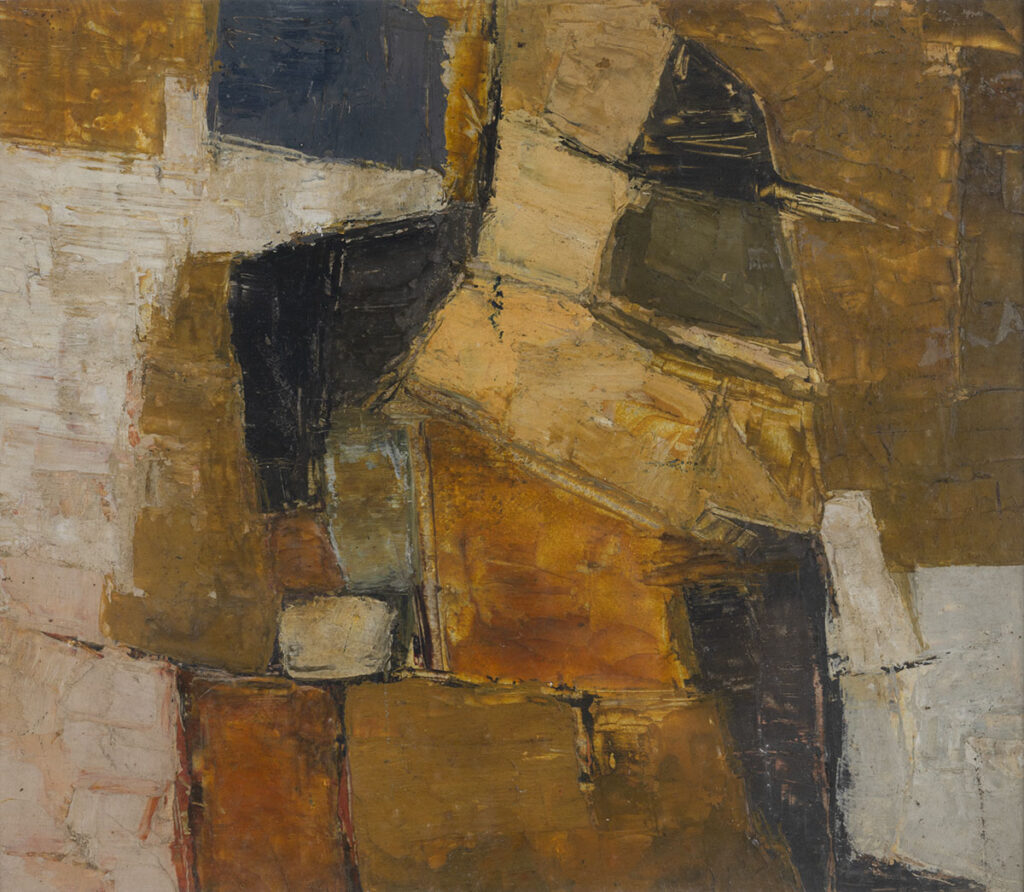
The images eventually integrate the mountains of his childhood in Shimla and the high desert of Ladakh, as well as chimeric towns and structures — he never presumed to renounce the world — but the edges between forms are now more permeable. Habitations melt into mountains, the landscapes seep into the trees. The transient flower is seen for the death and disintegration it carries within, and there is a lake that holds both blooming and decay.
The poet and critic Ranjit Hoskote conceives of Ram Kumar’s artistic journey as a pilgrimage, “given the orderliness with which its stages have succeeded one another.” Ram Kumar said simply, “I believe in working in a small area and exploring all its possibilities… the depth and intensity it brings out in the subject is personally more satisfying to me.” Working small areas in his orderly way, he uncovered a vast territory, and its unexpected byways: “Why some things appear in your work and others don’t is a mystery. Almost beyond your control.”
His was a pilgrimage perhaps most of all for its inward quest, carried out with a sensitivity, discipline, and absorption that offers few stories to its onlookers, much like his own reticence. “What Ram Kumar himself manages to express in his works is enough to make us curious about the source of his strength,” critic and journalist Sham Lal once said, “It is to be found in the care he takes not to impose his vision on us. This is why he eschews all drama.”
The works of Ram Kumar are records of a search and a conviction — not the conviction of what is said, however, but of the rigour of the investigation itself. Where his early silences were of the stifling of life, “the uprootedness of man,” as Verma saw it, the no man’s land of Ram Kumar’s abstracts may be that field “out beyond ideas,” in which Rumi says:
The world is too full to talk about.
Ideas, language, even the phrase ‘each other’
Doesn’t make any sense.
(Translated by Coleman Barks and John Moyne)
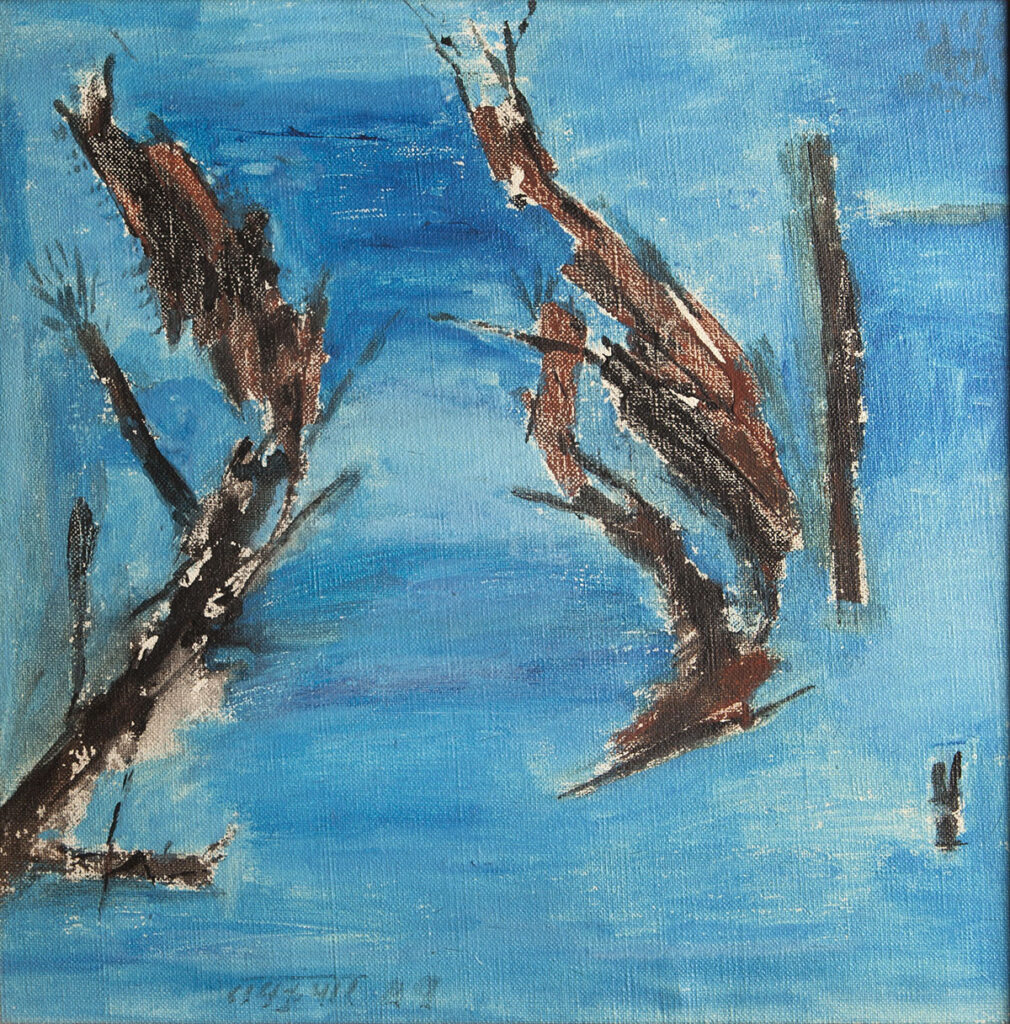
______
Ram Kumar (1924–2018) was born in Shimla, India in a large, middle-class family. He studied Economics and worked briefly as a banker and a journalist, also writing fiction that was published between 1945 and 1970. He trained in painting from 1949 to 1951, attending evening classes in Delhi, exhibiting with Delhi Shilpi Chakra, and studying under André Lhote and Fernand Léger in Paris. His involvement with Communist literary and artistic circles there forced him to return to India, where he eventually became recognised as one of the country’s foremost abstract painters. The exhibition Shape of a Thought: Letters from Ram Kumar is on view at the Museum of Art & Photography (MAP), Bengaluru, until October 2025.
Aditya Pandya is a writer, editor, artist, and designer. He serves as the Lead Editor for the MAP Academy Encyclopedia of Art.
